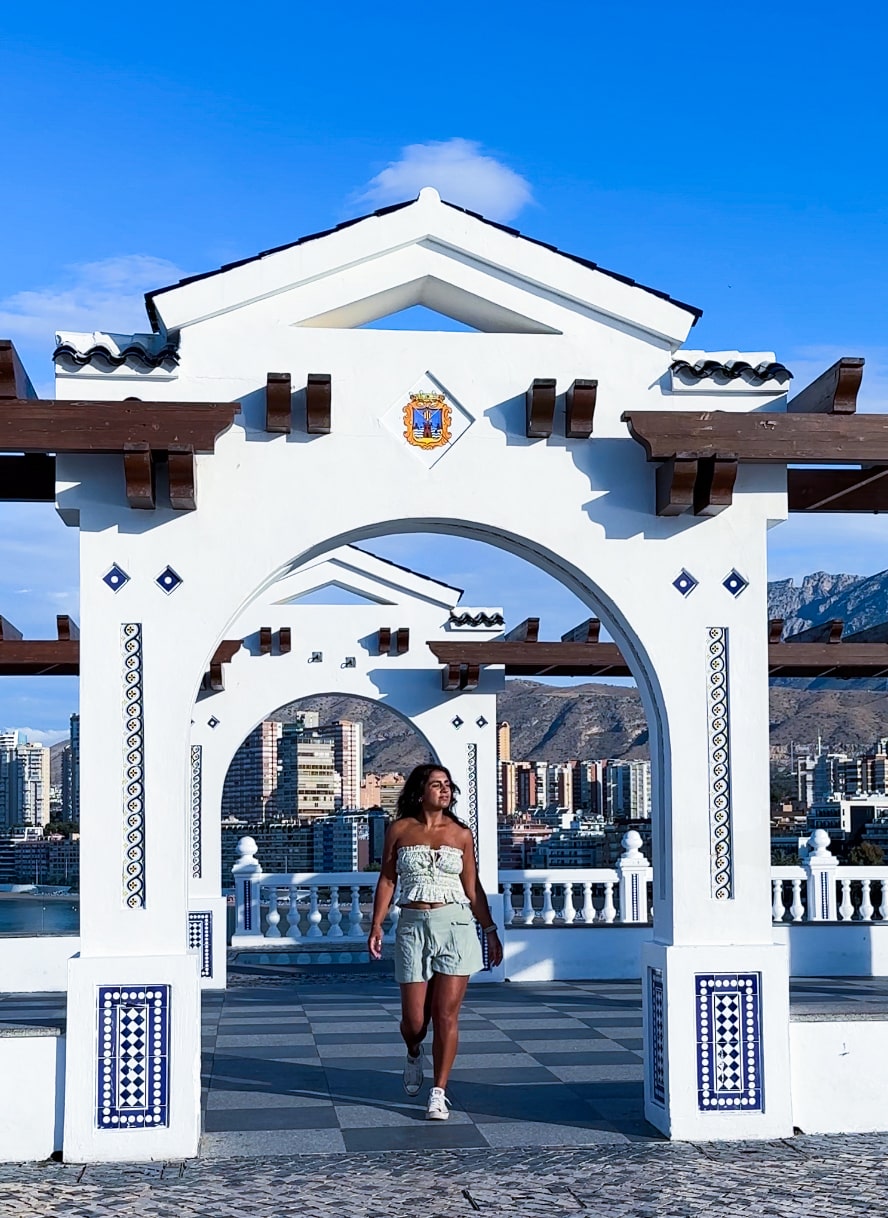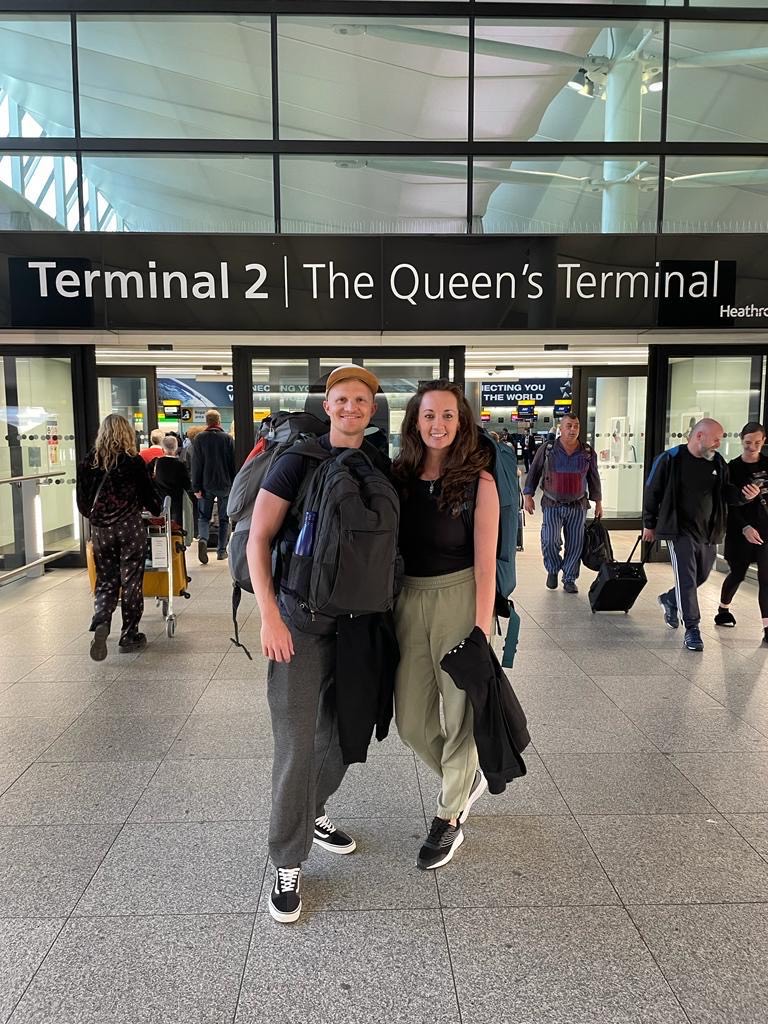Are you thinking of moving to Malta to start your life as a digital nomad? The European island is the perfect destination for anyone looking to work remotely in a thriving digital nomad hub while enjoying 300 days of sunshine per year. It sounds too good to be true, but thanks to Malta’s Nomad Residence Permit, digital nomads can now move to the island with potential to renew their visa for up to four years.
As a digital nomad and remote worker, you could find your new home in the cobbled streets of Valletta and spend your free time exploring the island’s history, delicious food and vibrant nightlife. I know from experience how challenging it is to move abroad and face a language barrier, but in Malta, English is widely spoken which makes it easy to settle in and make friends. Imagine the life you could be living, and just a few hours from home with great connections across Europe, with flights to the UK starting from £37. Who says the digital nomad lifestyle has to mean moving to the other side of the world?
If you’ve got your heart set on Malta as your new home, it’s time to start thinking about the practical elements of moving to another country. As someone who has moved abroad several times on different types of visas, I know there is a lot to consider, particularly if you want to work abroad. I’ve created this detailed guide featuring all the things you need to consider before applying for Malta’s digital nomad visa and booking your flight.
Moving to Malta as a Digital Nomad – The Ultimate Guide:
- Is Malta good for digital nomads?
- Can I work in Malta with a digital nomad visa?
- The Nomad Residence Permit
- Eligibility and Requirements for The Nomad Residence Permit
- Application Process for The Nomad Residence Permit
- How much does it cost to live in Malta as a digital nomad?
- Where to stay in Malta as a digital nomad?
- The best things to do in Malta
- Best day trips and adventure activities in Malta
- Explore Malta’s historical sights
- Visit Malta’s best beaches
Is Malta good for digital nomads?
Malta is considered one of the safest countries in the world, which makes it a great destination for digital nomads, remote workers and solo travellers. The lack of language barrier in this predominantly English-speaking country makes it easy to settle in and make friends, while navigating the visa process and moving to Malta. Digital nomads can benefit from 300 days of sunshine with a minimal time difference from the UK, which makes working remotely so much easier. As does access to 5G nationwide with hundreds of free public wifi hotspots!
Of course, digital nomads are looking for community and Malta delivers, with a thriving nomad community, great co-working and co-living spaces and networking events. But what about when you shut your laptop at the end of the day? Malta’s digital nomads can spend their free time trekking, hiking, diving and exploring the beaches. They can enjoy the vibrant nightlife and amazing food scene, while exploring Malta’s cultural and historical gems. If you’re looking for the perfect work-life balance, Malta has a lot to offer digital nomads.
Check out this comprehensive guide if you’re thinking of moving to Malta as a digital nomad.
Can I work from Malta with a digital nomad visa?
Yes, you can work from Malta using their digital nomad visa – the Nomad Residence Permit. The European island is welcoming remote workers to their thriving community of digital nomads who are choosing the laptop lifestyle in the Maltese sunshine over being office-bound in their home countries. One huge benefit of moving to Malta as a digital nomad is that the visa has the potential to be renewed up to four times, allowing you to have a base in the country for up to four years.
Find out which countries offer a digital nomad visa for UK citizens
The Nomad Residence Permit
Digital nomads and remote workers could be eligible for Malta’s digital nomad visa – the Nomad Residence Permit. It provides a visa for those who can work remotely or run a business from anywhere to live and work in Malta for up to one year, with the possibility to extend. The visa is issued for 1 year, but can be renewed upon application at the discretion of Residency Malta yearly for up to 4 years, as long as the applicant still meets the set eligibility criteria.
This visa allows holders to retain employment in another country while legally residing in Malta, so if you work remotely from your laptop, this is an amazing opportunity. If you’re interested in starting the process of moving to Malta as a digital nomad, read on to learn more about the visa and starting the application process. You can also read The Ultimate Guide to Malta’s Digital Nomad Visa.
What are the eligibility requirements for Malta’s digital nomad visa?
To qualify for the Nomad Residence Permit, you must meet the following eligibility criteria:
- Applicants must be third country nationals (non-EU, non-EEA, and non-Swiss nationals).
- You must be 18+ years old
- You must be able to work online with location independence
- Earn a minimum of €42,000 annually
- Be of good conduct
- Open to immediate family members/dependants
You must comply with one of the following:
- Have a contract with an employer registered outside of Malta
- Provide freelance services to clients registered outside Malta
- A self-employed owner of a business registered outside of Malta, who can work remotely
Those who are contracted by a foreign company but provide services to the company’s Maltese subsidiary are not eligible for the Nomad Residence Permit.
Digital nomad visa – Application Process
Before you start the application process for Malta’s Nomad Residence Permit, please make sure you have the following documentation:
- Proof of employment/income
- Proof of accommodation (after approval in principle)
- Health insurance covering Malta and European countries min €100,000 (after approval in principle)
- Police Conduct Certificate
- Pass a background verification check
It costs €300 per person to apply for the Nomad Residence Permit and the entire application is done online, which means you can be anywhere in the world when you apply for the visa. Residency Malta Agency has created this useful Nomad Residence Permit Checklist and exhaustive FAQs which cover everything you need to know and they recommend reading the document before starting the process.
Applications take around 60 working days or less – so be sure to leave enough time for your visa application to be processed before moving to Malta as a digital nomad. These are the stages of the application:
- Application for the Nomad Residence Permit is submitted with documentation.
- Application is checked and a receipt of application will be issued with instructions for payment.
- Once the payment is received, the processing of the application will start and can take up to 60 working days
- Background checks are conducted.
- For approved applications – a Letter of Approval in Principle is issued, and one is required to submit proof of accommodation and a health insurance policy within 30 days from the date of issue.
- Once the above is finalised, a Letter of Final Approval is issued.
- If an applicant requires an entry visa, they will be contacted by the Central Visa Unit at Identità (formerly known as Identity Malta Agency) to guide them on the process.
- Once in Malta, the applicant is required to notify the Agency via email to set up an appointment for the capture of biometrics.
- The residence card takes between 3-4 weeks to be issued.
- Once issued, the applicant will be notified via email and requested to pick up the card in person from Residency Malta’s offices, bringing with them their passport.
In the case of a renewal application, following the Letter of Approval in Principle, all required documents are to be submitted prior to the expiry of the current Nomad Residence Permit.
>> Click here to apply for Malta’s Nomad Residence Permit

How much does it cost to live in Malta as a digital nomad?
To qualify for the digital nomad visa in Malta, you need to be earning a minimum of €42,000 annually, but how much does it cost to live on the island? Digital nomads will be happy to hear life on the European island is relatively affordable with a solo traveller paying around €700 per month, excluding rent. Renting a one-bedroom apartment in the city centre could cost around €820 per month, but there are also co-living options available. Here’s a costs breakdown for what you could expect when moving to Malta as a digital nomad:
Expense | Cost |
Local SIM Card | €20 per month |
Monthly Transport Pass | €26 per month (free for all residents) |
Coworking Day Pass | €30 per month |
Local Beer | €3 |
Cappuccino | €2.25 |
A pizza or a plate of pasta | €15 |
Round-trip Ferry Ticket | €2.60 |
Check out my tips for Becoming a Digital Nomad: 25 Useful Tips

Where to stay in Malta as a digital nomad?
One of the hardest things when moving to a new country as a digital nomad is finding the right place to base yourself. From the best internet connectivity and digital nomad community, to finding the perfect work-life balance – there are so many factors to consider. Luckily for you, I’ve done the research to find the best towns and cities to base yourself in as a digital nomad in Malta!
Sliema
Sliema has been named one of the best cities in Europe for digital nomads! With a population of around 24,000, the city has a busy urban vibe but with the refreshing contrast of the slower pace of this seaside escape. It has everything a remote worker could need from hotels and apartments, to a choice of cafes to work from. There’s also the extra benefit of co-working spaces available in Gzira, the town right next to Sliema, which is within walking distance.
Valletta
Valletta was one of my favourite places to explore when I visited Malta, this beautiful city provides a welcoming hub for digital nomads and sits just across the harbour from Sliema. Expect co-working spaces, cafes, fun things to do and the opportunity to immerse yourself in Malta’s history and culture. As the country’s capital, the city does get busy, but it also has everything you could need as a digital nomad in Malta.
St. Julian’s
If you’re craving Malta’s most modern offering, look no further than St. Julian’s, which is located on the north side of the island. A dynamic contrast of high-rise buildings and traditional and historical Maltese homes, this town is full of cafes and co-working spaces. After a day of working, enjoy small beaches such as Balluta Bay or join the party in Paceville.
Victoria
Who says you have to stick to Malta? As a digital nomad, you could also base yourself in the main city on the island of Gozo, Victoria. The perfect destination for those who prefer a slower pace of life than the main island – you can still enjoy fast wifi speeds and of course, those beautiful island views. Here you will find less co-working spaces, but plenty of restaurants and cafes to base yourself in for a day of work. After work is done, explore ancient sites and beautiful coastline.
Mosta
For those who want to experience the authentic Maltese lifestyle, head to Mosta, a town hidden away from the most touristy areas of Malta. Known for its vibrant community, the town is a perfect place for digital nomads and has a plethora of cafes, stores and everything you could need to support your laptop lifestyle.
Buġibba
If you want to feel like you’re permanently on holiday, Bugibba is a lively town that attracts remote workers for its popular beach town vibe. Relax into the resorts and beach clubs that populate the coastline, or set up your workspace for the day in a restaurant or cafe. You won’t want to miss a sunset here, so close up the laptop early and enjoy some of the best beaches and sunset views on the island.

The best things to do in Malta
If you’re moving to Malta, you’ll want to check out some of the best things to do on the island. Make the most of your time exploring the island, and neighbouring islands, Gozo and Comino. Here are some highlights you will want to explore:
Best day trips & adventure activities in Malta:
- Go diving at Cathedral Cave and lots of other underwater sites including shipwrecks!
- Hike across the island via the Victoria Lines
- Take a boat trip, or catch the ferry, over to Blue Lagoon in Comino
- Enjoy a wine tasting of Maltese wine with indigenous Maltese grape varieties
- Go rock climbing, cliff jumping or try abseiling
- Cruise the coastline in a luzzu (a traditional Maltese fishing boat)
- Go kayaking, surfing or SUP
- Take a local brewery tour on Gozo
- Tour an abandoned film set – Robert Altman’s 1980 Popeye musical
- Explore Gozo’s citadel
- Dine on traditional Maltese cuisine or even at a Michelin star restaurant
Explore Malta’s historical sights:
- St John’s Co-Cathedral
- St Paul’s Catacombs
- Upper Barrakka Gardens
- Mdina Old City Fortress
- Grandmaster’s Palace
- Ħaġar Qim Temple
- Mosta Rotunda
- Ħal Saflieni Hypogeum
- Mnajdra Temples
- Tarxien Temples
- Ġgantija
Visit Malta’s best beaches:
- Golden Bay
- Ramla Beach
- Għadira Bay
- St. Peter's Pool
- Mġarr ix-Xini
- Għar Lapsi
- Hondoq ir-Rummien
- Qawra Point Beach
- Ġnejna Bay
- Paradise Bay
- Riviera Beach
- Fond Għadir Beach















